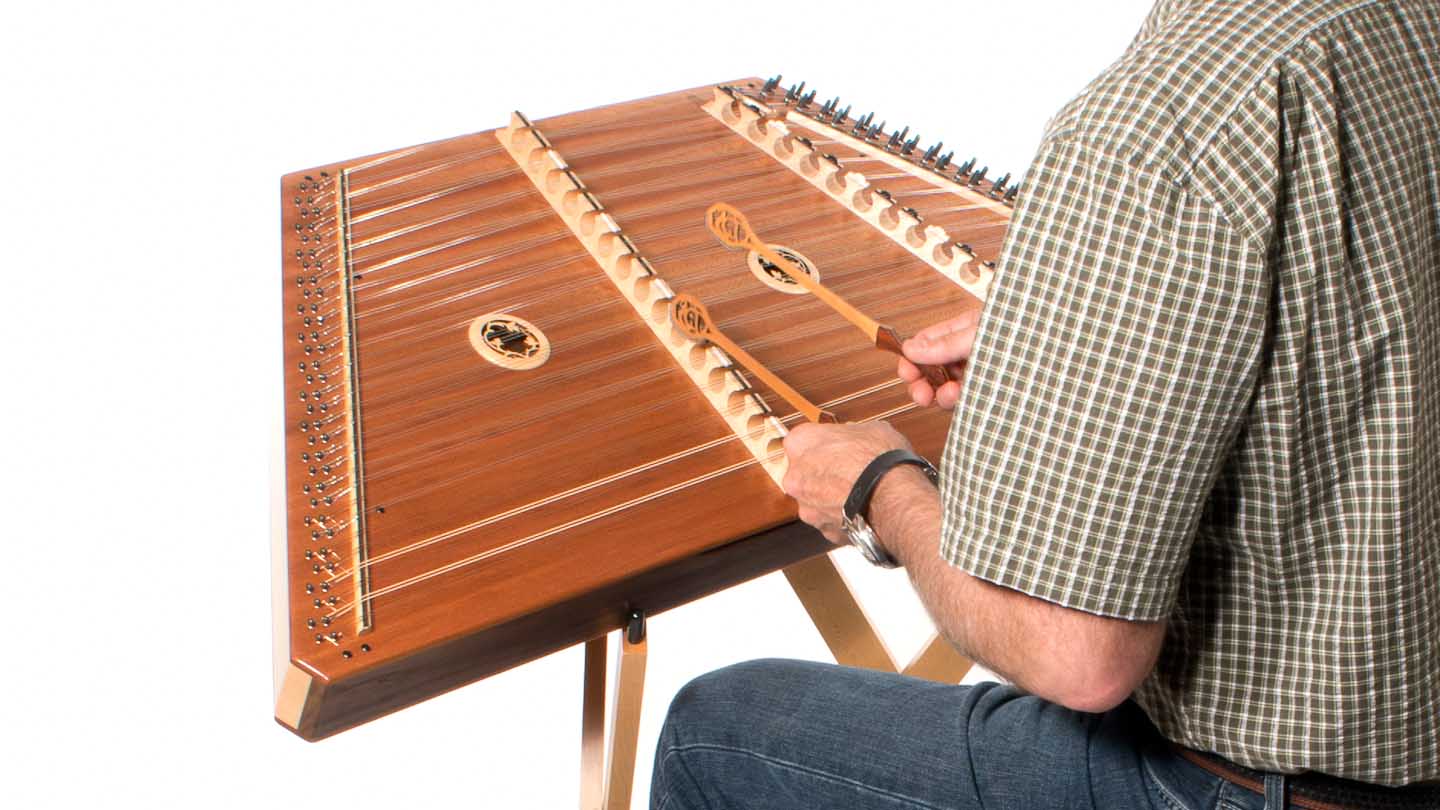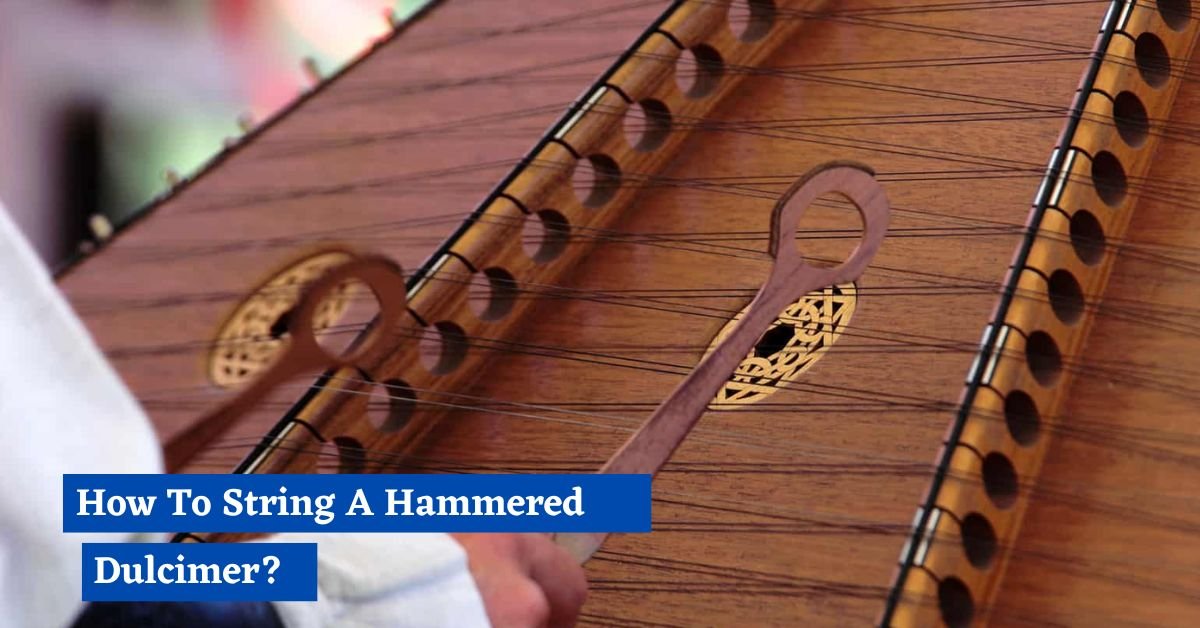How To String A Hammered Dulcimer: To string a hammered dulcimer, remove old strings, insert new strings into corresponding bridge pin and tuning pin holes, and secure them. Tune the dulcimer and make any necessary adjustments for optimal sound quality.
Understanding the Basics of the Hammered Dulcimer
Before we delve into the stringing process, it is crucial to have a basic understanding of the hammered dulcimer’s structure. The hammered dulcimer consists of a trapezoidal wooden soundboard with multiple strings running across it.

The strings are attached to tuning pins at both ends, and each string corresponds to a specific note. When struck with hammers, the strings produce the desired sound. By familiarizing yourself with the instrument’s structure, you will be better equipped to restring it effectively.
Gather the Necessary Tools and Materials
Before starting the stringing process, it is essential to gather all the required tools and materials. Here’s a list of what you’ll need:
- String set: Choose high-quality hammered dulcimer strings suitable for your instrument.
- Wire cutters: Used to trim excess string length.
- Tuning wrench: Needed to adjust the tuning pins.
- Pliers: Useful for bending and manipulating strings.
- Stringing chart: A reference guide that provides information on the specific pitches and placements of each string.
Removing Old Strings and Cleaning the Instrument
To begin the stringing process, you must first remove the old strings from your hammered dulcimer. Follow these steps:
- Start with the highest-pitched strings and work your way down.
- Use the tuning wrench to loosen the tuning pins and release the tension on each string.
- Once the strings are sufficiently loose, use wire cutters to trim them near the tuning pins.
- Gently lift the strings off the bridge pins and remove them from the soundboard.
- After removing all the old strings, take the opportunity to clean the soundboard using a soft cloth or brush, ensuring there is no debris or dust left behind.
Stringing the Hammered Dulcimer
Now that you have a clean soundboard, it’s time to start stringing your hammered dulcimer. Follow these steps:
- Refer to the stringing chart to identify the correct pitch and placement for each string.
- Begin with the lowest-pitched string and insert one end into the corresponding bridge pin hole.
- Stretch the string across the soundboard and insert the other end into the corresponding tuning pin hole.
- Use pliers to bend the end of the string around the tuning pin, ensuring it is secure.
- Repeat the process for each string, working your way from the lowest to the highest pitch.
- As you go along, make sure to keep the strings straight and evenly spaced across the soundboard.
Tuning and Final Adjustments
Once all the strings are securely in place, it’s time to tune your hammered dulcimer. Follow these steps:
- Use the tuning wrench to tighten or loosen the tuning pins, adjusting the tension of each string.
- Refer to a tuner or an electronic device to ensure each string is tuned to the correct pitch.
- Pay attention to the tension and sound quality of each string, making any necessary adjustments until all strings are in tune.
- Once all the strings are properly tuned, play a few notes and chords to check for any buzzing or unevenness. Make any additional adjustments as needed.

How do you restring a dulcimer?
Restringing a dulcimer involves removing the old strings and replacing them with new ones. Start by loosening the tuning pins and trimming the old strings near the pins. Then, insert the new string into the corresponding bridge pin hole and stretch it across the soundboard to the tuning pin hole. Use pliers to secure the string around the tuning pin. Repeat this process for each string, working from low to high pitches. Finally, tune the dulcimer and make any necessary adjustments for optimal sound quality.
What is the string spacing for a hammered dulcimer?
The string spacing on a hammered dulcimer typically follows a specific pattern. The strings are spaced in a chromatic arrangement, with narrower spacing for the higher-pitched strings and wider spacing for the lower-pitched strings. The exact spacing can vary depending on the specific dulcimer model and player preferences. Generally, the spacing gradually widens as you move from the treble side to the bass side of the instrument, allowing for comfortable access and efficient playing across the entire range of the dulcimer.
How many strings are on a hammered dulcimer?
The number of strings on a hammered dulcimer can vary depending on the specific model and design. However, a typical hammered dulcimer can have anywhere from 60 to 100 strings or more. The strings are usually arranged in a diatonic or chromatic pattern, covering several octaves. The string configuration and number of strings allow for a wide range of notes and harmonies, enabling the player to create beautiful melodies and intricate musical arrangements on the dulcimer.

What notes are used for a hammered dulcimer?
The hammered dulcimer is a highly versatile instrument capable of producing a broad range of musical notes. The specific notes on a hammered dulcimer depend on the tuning system used, as different players and musical traditions may have their own preferences.
Common tunings for hammered dulcimers include diatonic, chromatic, and modal tunings. Diatonic tunings are often used in traditional folk music, while chromatic tunings provide a wider range of notes for more diverse musical styles. Modal tunings are employed to achieve specific tonalities and evoke particular moods or atmospheres in the music played on the dulcimer.
FAQs
How often should I restring my hammered dulcimer?
The frequency of restringing depends on various factors such as the quality of strings, playing frequency, and environmental conditions. As a general guideline, it is recommended to restring your hammered dulcimer at least once a year or when you notice signs of string wear, such as fraying or loss of tone.
Can I use guitar strings or other types of strings for my hammered dulcimer?
It is best to use strings specifically designed for hammered dulcimers. These strings are crafted to withstand the instrument’s unique tension and produce optimal sound quality. Using strings designed for other instruments may result in poor sound production and potential damage to your hammered dulcimer.
Conclusion
Restringing a hammered dulcimer may require time and patience, but the rewards are well worth the effort. By following the step-by-step guide outlined above and gathering the necessary tools, you can successfully restring your instrument and restore its vibrant and resonant sound. Remember to take care of your hammered dulcimer, and it will continue to delight you and those around you with its enchanting melodies for years to come.


